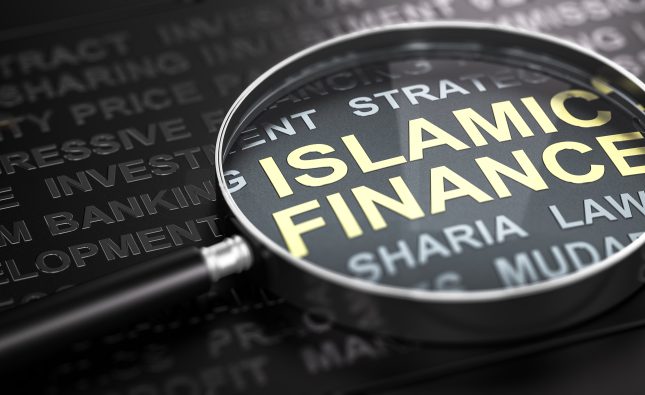
Sustainable investing has rapidly grown in popularity over the past decade as individuals, companies, and governments seek to address global challenges like climate change, social inequality, and environmental degradation. The investment landscape is shifting, with more people recognizing that financial returns can go hand-in-hand with positive social and environmental impacts. This article explores the trends shaping the future of sustainable investing and highlights the opportunities for investors looking to make responsible financial decisions.
What is Sustainable Investing?
Sustainable investing, also known as socially responsible investing (SRI), ESG (Environmental, Social, and Governance) investing, or impact investing, refers to strategies that consider not only financial returns but also the long-term impact of investments on the environment and society. Investors assess companies based on their ESG performance, ensuring that businesses align with values such as climate action, equality, and ethical governance.
In recent years, sustainable investing has evolved beyond a niche market. It is becoming mainstream as more investors and institutions prioritize these factors in their portfolios, driven by the understanding that sustainable practices can lead to long-term profitability and reduced risks.
Key Trends in Sustainable Investing

Pexels.com
1. Growth in ESG Integration
One of the most significant trends in sustainable investing is the increasing integration of ESG factors into traditional investment processes. In the past, sustainable investing was often viewed as sacrificing financial returns for social impact. However, there is growing evidence that companies with strong ESG performance often outperform their peers in the long run. This shift is leading asset managers to incorporate ESG factors into their decision-making frameworks, resulting in more sustainable and resilient portfolios.
2. Climate Change and Decarbonization
Climate change has emerged as a major focus in sustainable investing. With extreme weather events becoming more frequent and the growing recognition of the economic risks associated with climate change, investors are increasingly drawn to companies that are actively reducing their carbon footprints. This includes investments in renewable energy, energy efficiency, and companies with clear decarbonization plans. Companies that fail to address their environmental impact are increasingly seen as risky investments.
3. Green Bonds and Sustainable Finance
The green bond market has seen exponential growth, providing an opportunity for investors to fund environmentally beneficial projects. Green bonds are fixed-income instruments that are used to finance projects related to energy efficiency, clean transportation, and climate change adaptation. Similarly, social bonds and sustainability-linked loans are emerging as financial products that support social and environmental initiatives, making them attractive to ESG-conscious investors.
4. Social Impact and Diversity
Social issues, such as labor rights, gender equality, and community engagement, are becoming more prominent in investment decisions. Investors are increasingly seeking to invest in companies that promote diversity and inclusion, provide fair wages, and support community development. This trend is being driven by the recognition that companies with diverse leadership and inclusive cultures are more innovative and tend to perform better financially.
5. Technology and Innovation in Sustainable Investing
Advancements in technology are playing a crucial role in the growth of sustainable investing. Technologies such as artificial intelligence (AI), machine learning, and blockchain are helping investors analyze ESG data more efficiently, enabling better decision-making. Furthermore, tech innovations are driving sustainability in industries like clean energy, electric vehicles, and waste management, offering exciting opportunities for investors looking to support cutting-edge solutions to global challenges.
The Role of Regulations in Sustainable Investing
Governments and regulatory bodies around the world are increasingly adopting policies that promote sustainable investing. In Europe, the EU’s Sustainable Finance Disclosure Regulation (SFDR) requires investment firms to disclose how sustainability risks are integrated into their investment decisions. Similar initiatives are emerging globally, aiming to provide more transparency and prevent greenwashing, where companies falsely claim to be environmentally responsible.
These regulations not only guide investors but also encourage companies to adopt more sustainable practices, further driving the momentum behind sustainable investing.
Sustainable Investing Opportunities
1. Renewable Energy
One of the most significant areas of opportunity in sustainable investing is renewable energy. With the global transition away from fossil fuels, renewable energy sources such as wind, solar, and hydroelectric power are becoming increasingly important. Investors have a unique opportunity to contribute to the clean energy revolution while enjoying substantial returns, as the demand for renewable energy continues to grow.
2. Clean Technology
Clean technology, or cleantech, refers to products and services that reduce environmental impacts through energy efficiency, waste management, and resource conservation. This sector is rapidly expanding as governments and corporations adopt technologies that can lower their carbon emissions and reduce environmental harm. Investing in companies involved in cleantech presents a profitable and impactful opportunity for investors.
3. Sustainable Agriculture
Agriculture is another area where sustainable investing can play a significant role. Sustainable agriculture practices, such as organic farming, regenerative agriculture, and water conservation, offer solutions to the challenges posed by climate change and resource scarcity. Investors can support companies and projects that focus on sustainable food production, helping to ensure food security while promoting environmental sustainability.
4. Impact Investing in Emerging Markets
Emerging markets represent a fertile ground for impact investing, where capital is directed towards projects that have both a financial return and a positive social or environmental impact. From clean water initiatives to affordable housing, impact investments in developing countries are gaining traction as they address critical societal needs while offering opportunities for long-term growth.
5. ESG-Focused Funds
For individual investors, ESG-focused mutual funds and exchange-traded funds (ETFs) offer a convenient way to participate in sustainable investing. These funds are designed to track companies that meet specific ESG criteria, making it easier for investors to align their financial goals with their ethical values. As more ESG funds enter the market, they are becoming a popular choice for both retail and institutional investors.
Challenges and Risks in Sustainable Investing
While sustainable investing presents many opportunities, it also comes with its challenges. One major risk is the issue of greenwashing, where companies or funds make misleading claims about their sustainability efforts. This can make it difficult for investors to identify truly responsible investments. Moreover, the lack of standardized ESG reporting across industries creates inconsistencies, making it challenging to compare companies’ sustainability performance.
Investors must also be mindful of the potential for lower liquidity in some ESG investments, as well as the possibility of regulatory changes that could impact the profitability of certain sustainable assets. However, by conducting thorough research and working with trusted advisors, investors can navigate these challenges and capitalize on the growing momentum of sustainable investing.
Analysis Table: Key Trends in Sustainable Investing
| Trend | Description | Impact on Investors |
|---|---|---|
| ESG Integration | Incorporating environmental, social, and governance factors into investment decisions. | Leads to more resilient, sustainable portfolios. |
| Climate Change Focus | Increasing investment in companies that actively reduce carbon footprints. | Reduces risk and aligns with global climate initiatives. |
| Green Bonds | Bonds that fund environmentally beneficial projects. | Attracts investors seeking environmental and social returns. |
| Social Impact | Investments that prioritize diversity, inclusion, and fair labor practices. | Can enhance innovation and improve financial performance. |
| Tech Innovation | Using technology to drive sustainability and analyze ESG data. | Offers new investment opportunities in emerging technologies. |
Comparative Table: Sustainable Investing vs. Traditional Investing
| Factor | Sustainable Investing | Traditional Investing |
|---|---|---|
| Focus | Financial returns plus social/environmental impact | Primarily financial returns |
| Risk Management | Considers long-term risks related to ESG factors | Primarily considers market and financial risks |
| Opportunities | Investments in renewable energy, cleantech, sustainable agriculture | Investments in traditional industries like oil, gas, manufacturing |
| Regulation | Increasing regulations promoting sustainability and transparency | Limited regulatory focus on sustainability |
| Investor Demand | Rapidly growing demand, especially among younger and institutional investors | Steady demand, but declining interest in fossil fuel-based investments |
Conclusion
The future of sustainable investing is bright, with growing trends and opportunities that provide investors with the chance to align their financial objectives with positive social and environmental impact. From the rise of renewable energy and cleantech to the increasing importance of ESG factors, sustainable investing is becoming a vital part of the global investment landscape. While challenges like greenwashing and regulatory inconsistencies remain, the momentum behind sustainable investing shows no signs of slowing down.
For investors, the key is to stay informed about evolving trends, conduct thorough research, and consider how their investments can not only generate returns but also contribute to a better, more sustainable world.










